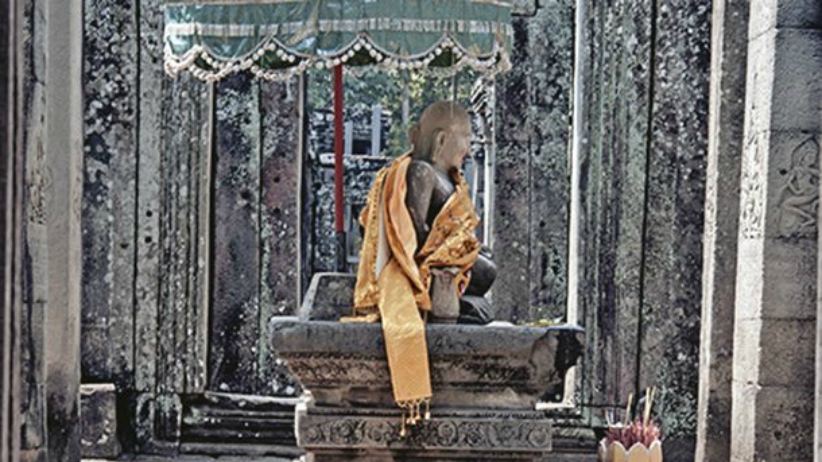
“Nowhere can man find a quieter or more untroubled retreat than in his own soul.” ~ Marcus Aurelius
It’s not just practicing Buddhists who are flocking to the many temple tours in Asia this year, but curious vacationers who want to learn about the region’s history and culture. Some travelers who head to Japan trek the 800-mile Shikoku route that stops at 88 different Buddhist temples. Buddhist-themed tourism is big business all over Asia, with Japan, China, Thailand, Burma, India and Sri Lanka the primary destinations for culture-hungry tourists and pilgrims.
Spending your retreat at a Buddhist temple is a challenge. It calls for planning, perseverance, and a decent amount of study before departure. But the rewards of a meditation retreat or extended, contemplative stay at an Asian Buddhist holy site can be life changing.
Typical two-week tours offer up things like meditation retreats in Sri Lanka monasteries, festivals in India, up-close tea ceremony experiences in Japan, back-road hikes to remote temples in China, Burma and Thailand. It’s a rare treat for Westerners to spend an afternoon sipping matcha tea in a Tokyo Zen temple or devoting two full weeks to a silent Vipassana retreat in Colombo, Sri Lanka.
Temple tour tips for travelers
Anyone who wants to see Buddhist temples in Asia needs to do some homework before booking a specific tour. Here’s the best way to begin:
1. Decide on a specific temple or region you want to visit. Many Asian countries, particularly Burma and Sri Lanka, are quite strict about what tourists can and can’t do, and how long they can stay.
2. If you are connected with a Buddhist community in your home country, speak with someone there who has traveled in Asia before. That’s because some national tourism offices give preference to “pilgrims,” a term generally defined as any Buddhist wanting to visit particular temples or holy sites.
3. Don’t rely on a destination country’s embassy or government travel office to offer reliable agency contacts. Some of those “official” travel agencies in various countries are low-quality organizations whose status is purely political and not based on their quality as travel bookers.
4. If you book your own tour, be absolutely certain that you know the “rules of the road” for any temple you plan to visit. Some only allow tourists at certain times or will ask you to fill out an application if you want to attend a meditation retreat. This is a crucial step because you may not be able to get a pilgrim visa, or any visa, without a written “invitation” from a temple official.
5. Once all the paperwork is done, applications filled out (if necessary) and tickets purchased, make sure you understand how to dress and act when spending time at your temple of choice. Remember, Buddhist temples are, in a manner of speaking, very similar to Christian churches.
Etiquette for temple visitors
Rules of etiquette at Buddhist temples vary, but there are some general guidelines.
1. At many temples, especially in Burma and Thailand, there will be residents who are trying to meditate, so strive to speak in a low voice while on the grounds.
2. Dress conservatively. For both women and men, this means covering legs at least to below the knees, preferably all the way to the ankles. Asia can be the hottest, stickiest place on earth during the warm months, so keep that in mind when planning a trip. Arms should be covered as well. The general rule is that short sleeves are usually okay, but sleeveless shirts and tops are a no-no.
3. Wear shoes that you can quickly take off because you will need to remove footwear when you are in and around a temple.
4. Don’t touch or point at sacred statues, nuns or monks. When approaching a Buddha statue, try at all times to keep your head below the Buddha’s head. This applies to reclining Buddha images as well, so be ready to do some kneeling or crouching if you want a close-up photo. You should also bow your head as a polite display of respect when you are face-to-face with a Buddha statue or image.
5. Remember that specific temples you visit will likely have some other, local rules for you to follow, so be ready to add to the general list above.
Touring famous, or little-known, Buddhist temples and monasteries of the world can be the retreat of a lifetime. But, special experiences call for special preparation and proper behavior. Make sure you know what to expect by spending plenty of time planning your trip and learning how to behave once you arrive. Travelers who do the leg work and advance planning will be rewarded with an unforgettable experience and perhaps an enlightening one.
Comments
Catalin Zorzini
Catalin Zorzini is a design blogger with a thing for ecommerce, matcha tea and bebop. You can connect with him via Twitter.
read more